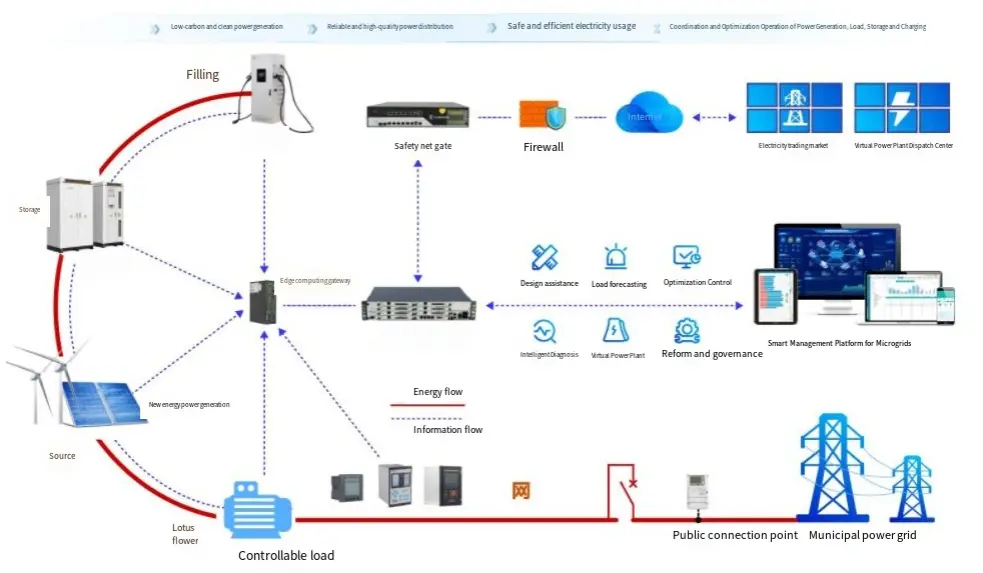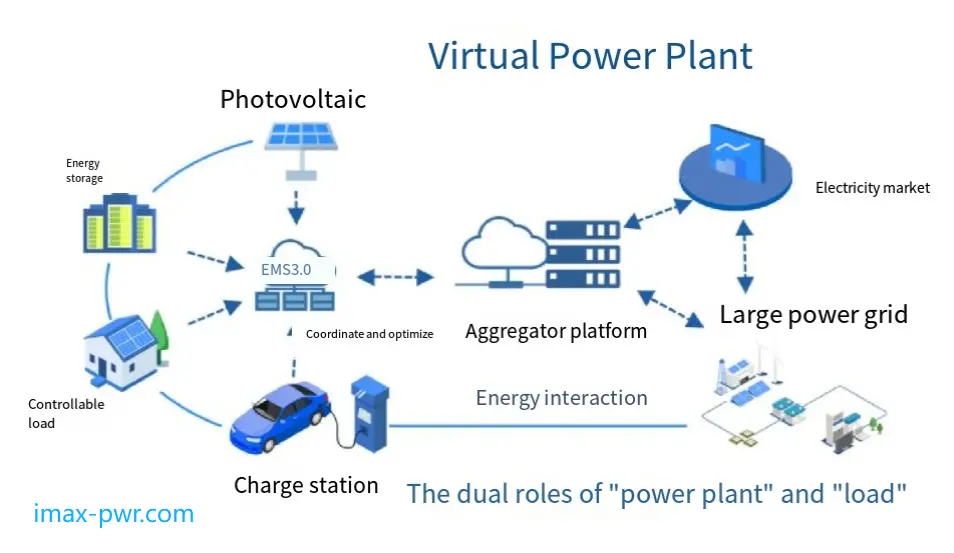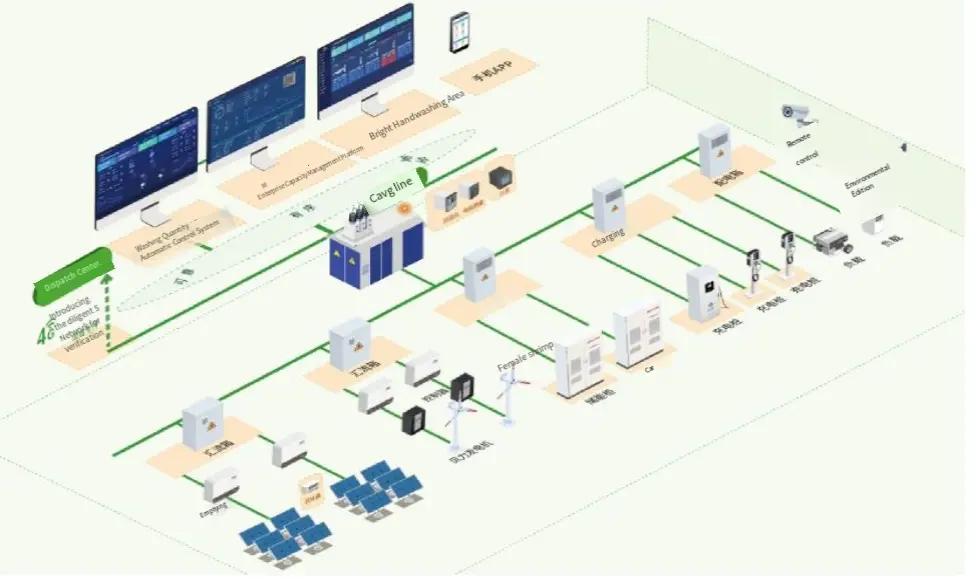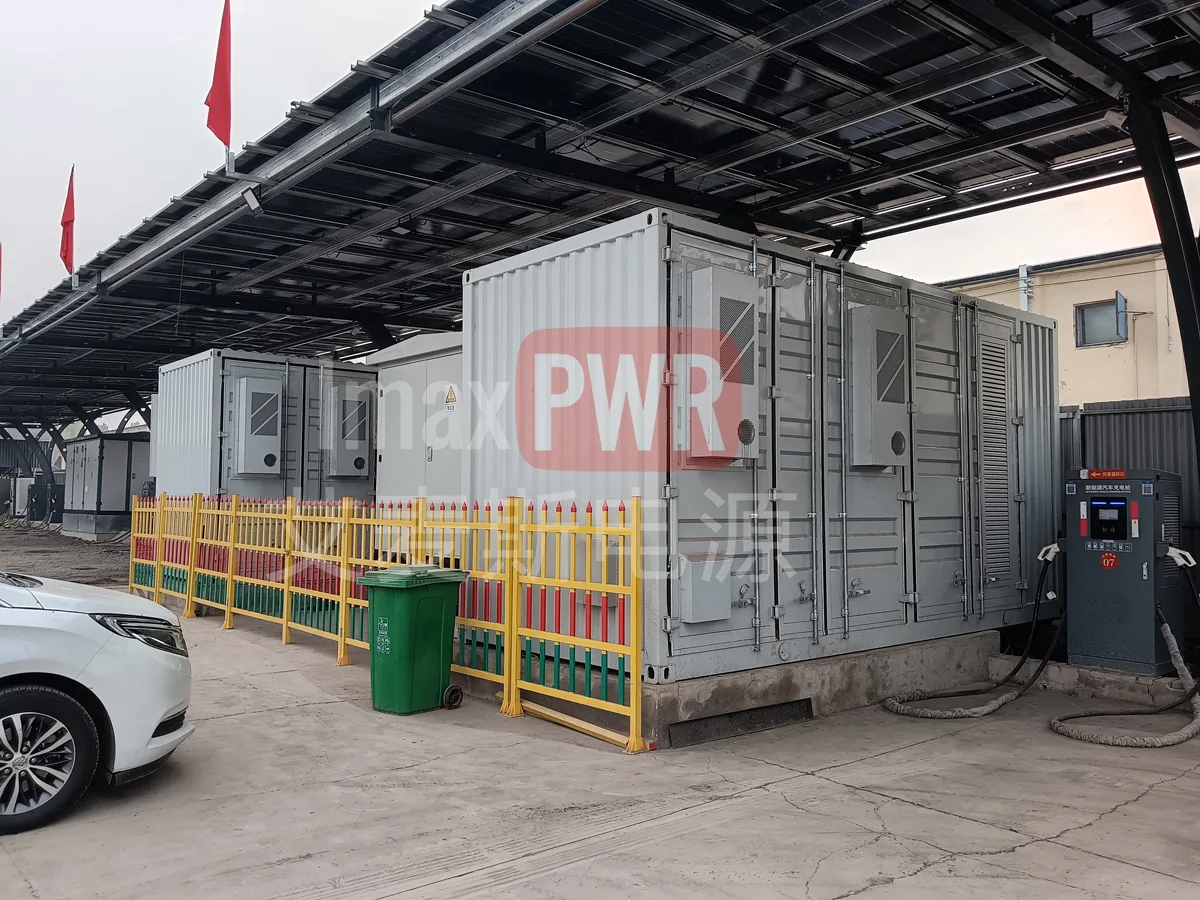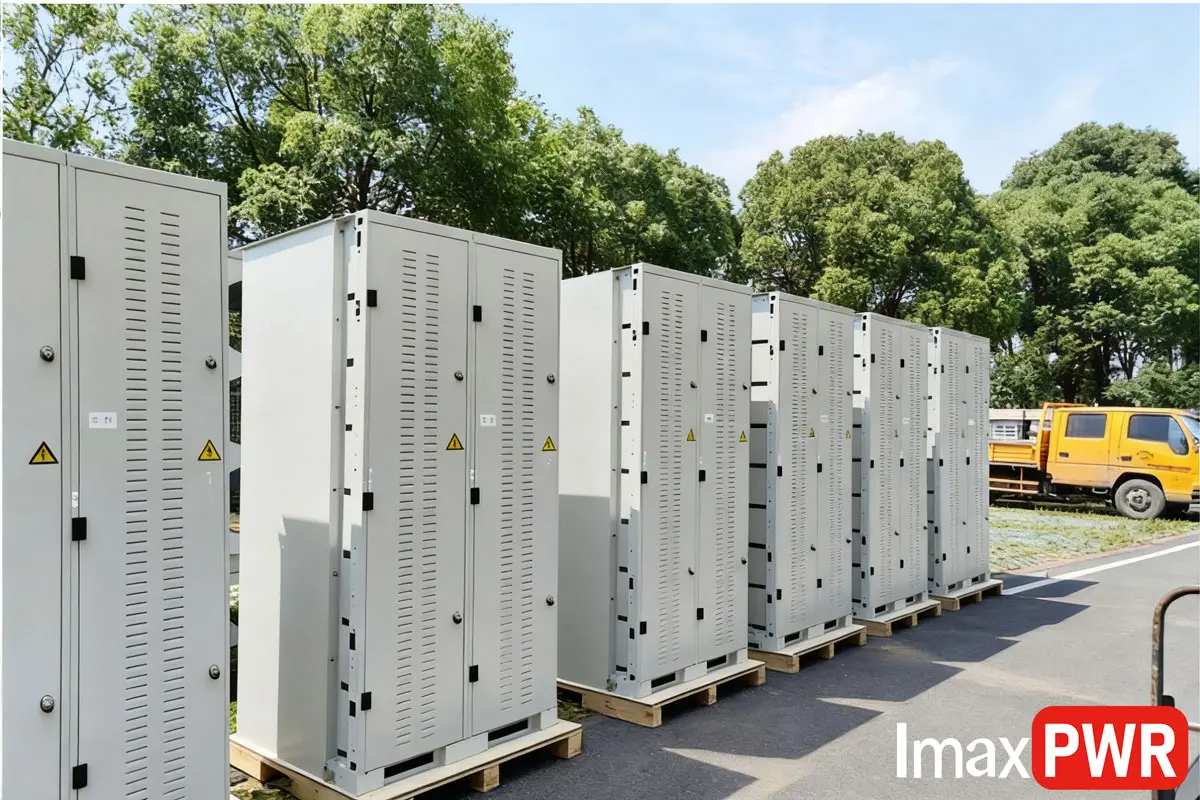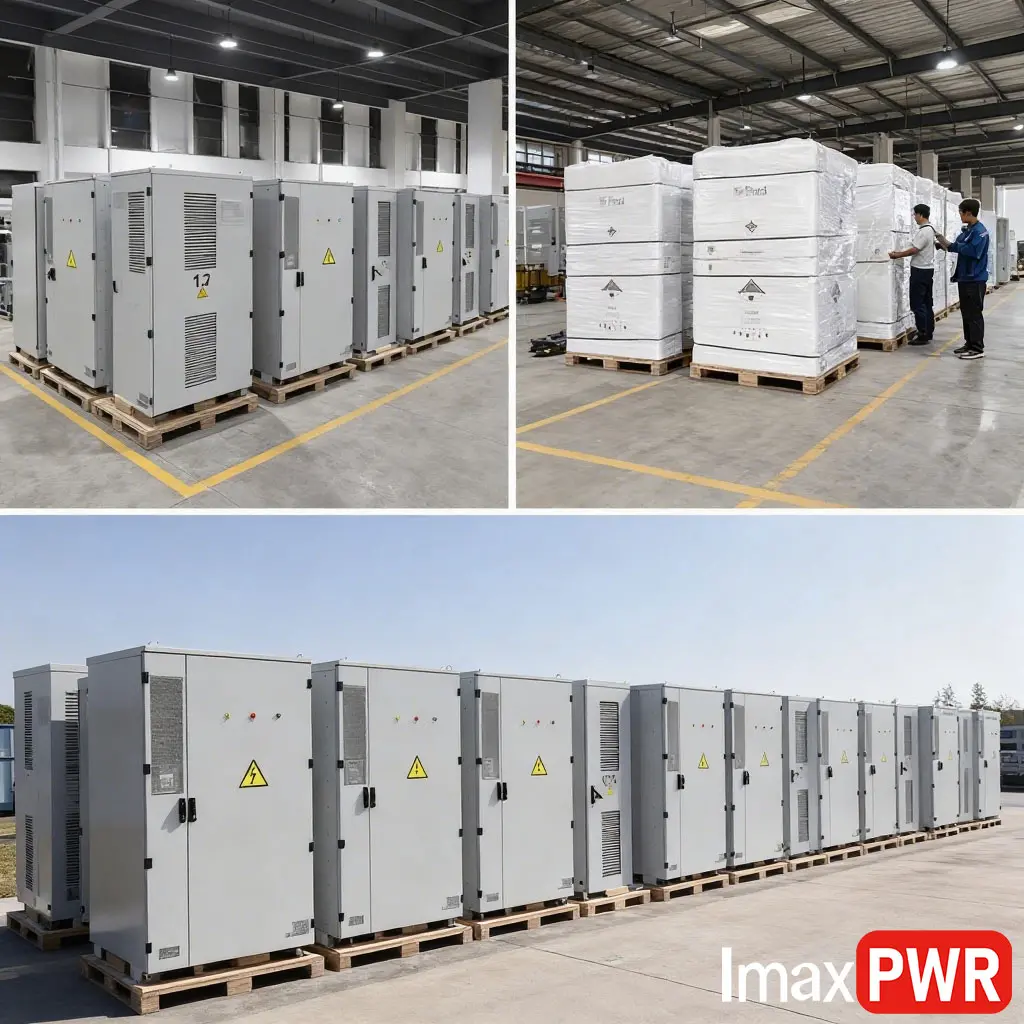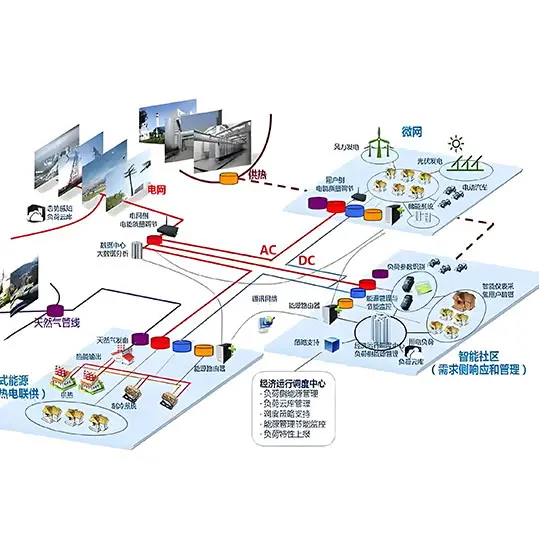1. New Power under Energy Transformation
In the wave of global energy transformation, traditional energy sources, plagued by resource shortages and environmental impacts, are driving countries towards clean energy. Wind, solar, and other renewable energy sources are rising in the power mix, challenging the stability of power systems. To address these challenges, new power system concepts like source-grid-load-storage, virtual power plants, and microgrids have emerged as crucial pathways for energy transformation and stable power supply.
2. Definition Analysis
(1) Source-Grid-Load-Storage: The Synergistic Blueprint of Power Systems
Source-grid-load-storage represents a new power operation mode integrating sources, grids, loads, and storage. In traditional power systems, power mainly comes from generators like thermal and hydro units, transmitting electricity from central power plants to various regions. Loads encompass industrial, commercial, and residential users, while storage, increasingly vital with new energy development, stores surplus electricity for later use. Source-grid-load-storage emphasizes collaboration among these four links, achieving power system optimization through source-load complementation, grid-load interaction, load-storage interaction, and source-storage interaction.
(2) Virtual Power Plant: The Invisible Coordinator of Power
Virtual power plants, though lacking physical plants and equipment, are energy management optimization platforms built on digitization and intelligent technology. They integrate distributed resources like solar, wind, biomass, and storage systems, as well as controllable loads, forming a virtual entity. Essentially, virtual power plants focus on “integration” and “communication,” using information technology to manage scattered energy resources uniformly, making them participate in power grid and market operations like traditional power plants.
(3) Microgrid: The Guardian of Local Power
A microgrid is a small-scale power system with clear physical boundaries, usually consisting of distributed sources (e.g., small wind turbines, solar panels, small hydro), energy storage devices, and electronic converters. It can operate independently or in parallel with the main grid. Compared to the main grid, microgrids are smaller, focusing on local areas like islands, remote mountains, and industrial parks, providing reliable power.
3. Three Distinctions
(1) Scale and Scope: From Macro to Local
Source-grid-load-storage systems are flexible, integrating centralized and distributed sources, connecting large and complex loads, and configuring energy storage. Provincial-level examples include coordinating various power plants, centralized and distributed sources, and multiple new energy types to meet diverse industrial, commercial, and residential demands. Simultaneously, large-scale energy storage stations are built to ensure system stability. Smaller-scale or independent entities can also adopt source-grid-load-storage, like industrial parks using distributed sources and storage for internal power balance and optimization.
Virtual power plants offer high flexibility, integrating diverse regional resources. They combine small distributed sources and controllable loads. Despite individual small scales, like household photovoltaic storage systems, their combined resource volume is significant.
Microgrids are smaller, serving specific communities, islands, campuses, and factories. Taking island microgrids as an example, they usually combine wind turbines, solar panels, and other distributed sources with energy storage and local loads, operating at medium and low voltages to ensure local power supply.
(2) Physical Form: Virtual vs. Real
Source-grid-load-storage is an operational concept and paradigm, not a physical entity. It optimizes the integration of various sources (traditional fire, hydro, new energy wind, solar), grids (different user-side, distribution networks), and loads (water pumping, battery storage). In practice, it uses existing power infrastructure and advanced communication technology for information interaction and collaboration.
Virtual power plants rely on software platforms and communication networks for virtual integration of distributed resources. Without physical plants and transmission facilities, they use the Internet of Things, big data, and cloud computing to connect distributed sources, storage, and controllable loads, forming a unified “electricity factory” under virtual management.
Microgrids are small physical systems, including distributed sources, energy storage, distribution networks, loads, and monitoring protection devices. In industrial parks, they connect through lines to form an independent power system.
(3) Functional Focus: Comprehensive vs. Specialized
Source-grid-load-storage focuses on overall power system optimization. It considers source characteristics and distributions, planning source construction and promoting new energy consumption. On the grid side, it coordinates sources, grids, loads, and storage for stable grid operation. For loads, it guides user-side actions to improve efficiency. It also emphasizes efficient energy use, leveraging storage for peak shaving and emergency support, promoting low-carbon transformation.
Virtual power plants mainly participate in power market transactions, providing services. By aggregating distributed sources and controllable loads, they respond to real-time market prices and demands, adjusting power output. In power markets, they act as independent entities for direct transactions and auxiliary services (frequency regulation, peak shaving, standby).
Microgrids ensure reliable power in specific areas. Normally, they operate in parallel with the main grid for efficient local energy use and interaction. When the main grid fails, they switch to island mode, relying on distributed sources and storage for continuous local power supply.
4. Interconnections
(1) Common Goal: Boosting Energy Transformation
Source-grid-load-storage, virtual power plants, and microgrids all aim to enhance power system flexibility, reliability, and sustainability. They play key roles in increasing renewable energy consumption. Source-grid-load-storage optimizes the collaboration of sources, grids, loads, and storage to adapt to new energy fluctuations, promoting large-scale renewable energy integration. Virtual power plants aggregate distributed sources for unified management and market participation, boosting new energy use. Microgrids use local sources for local consumption, reducing transmission losses and increasing regional renewable energy ratios. They all contribute to enhancing grid flexibility and stability in response to changes.
(2) Technology Integration: Advanced Technology Fusion
Source-grid-load-storage, virtual power plants, and microgrids share common technologies like distributed generation, energy storage, power electronics, and intelligent monitoring. These technologies support new energy integration, whether large-scale grid-connected or small-scale microgrids, relying on distributed new energy conversion. Energy storage technology is key for solving intermittency, providing balancing in source-grid-load-storage, flexibility in virtual power plants, and stable operation in microgrids.
Virtual power plants use technologies like the Internet of Things, big data, and cloud computing to integrate distributed sources, storage, and controllable loads. Through data analysis and intelligent optimization, they improve resource allocation and system efficiency. For example, they can合理安排(这里原文未翻译,应译为“reasonably arrange” ,但为更好表达,可译为“optimize”) energy storage charging and discharging based on electricity demand and source output, controlling load usage time and power.
Microgrids are small-scale source-grid-load-storage systems, integrating distributed sources, loads, and storage. Virtual power plants can manage multiple microgrids for resource optimization and market participation.
(3) Practical Application: Large and Small System Synergy
In practice, microgrids, virtual power plants, and source-grid-load-storage collaborate for efficient system operation. Microgrids ensure local power stability for specific areas, meeting enterprise demands even during main grid failures.
Virtual power plants aggregate microgrid resources for market transactions. As major market entities, they buy and sell power based on market signals, optimizing resource allocation.
Source-grid-load-storage coordinates regional grids, microgrids, and virtual power plants. It uses intelligent management systems to balance power supply and demand, optimize grid and microgrid interactions, and develop strategies for source-load coordination. During peak periods, it adjusts virtual power plants and microgrids to increase power supply, ensuring stable operation.
5. Future Prospects
In the future, source-grid-load-storage, virtual power plants, and microgrids will have broader development space, playing key roles in energy transformation and new power system construction.
Source-grid-load-storage will accelerate intelligence and collaboration. With 5G, the Internet of Things, and artificial intelligence, information exchange among sources, grids, loads, and storage will be more timely and accurate, improving collaboration efficiency. Through algorithms and big data, it will accurately predict power demand, optimize output, and enhance flexibility, reliability, and economy. Its scale and scope will expand.
Virtual power plants will have more participation forms. Besides direct power transactions and auxiliary services, they will engage in capacity markets and demand response, providing more flexible regulation resources. With new energy growth, their integration with vehicle-network interaction will advance.
Microgrids will develop towards intelligence and standardization. Technology advancements will improve operation and energy use efficiency. Standardization will promote the healthy development of new energy industries, reducing costs. Microgrids will have closer interactions with the main grid, complementing each other to ensure stable power system operation.
Source-grid-load-storage, virtual power plants, and microgrids will integrate and collaborate, jointly driving energy transformation and new power system construction for sustainable energy development.

